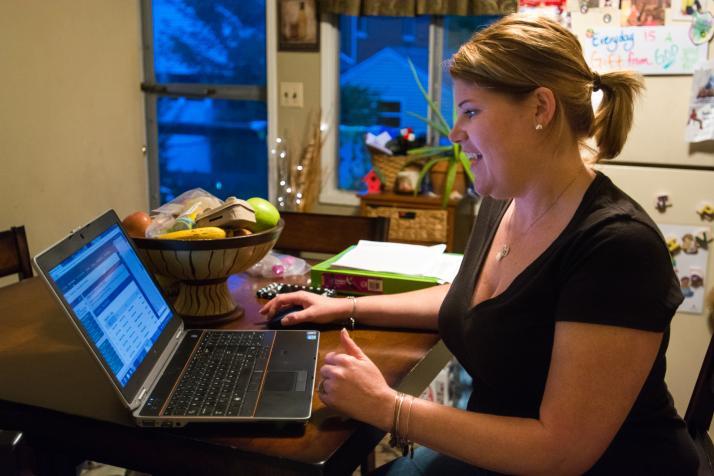Instructor tips for a smooth final exam season
November 16, 2020
Conducting exams remotely this Fall 2020 semester may have you and your students using technology in ways you haven't before. Ensure you're ready with these tips from OIT.
General tips
Many students may be traveling home or somewhere else for the remainder of the semester, which can result in changes to their testing environments.
- Be thoughtful about the time restrictions you put on exams. While having all students take an exam at the same time might help maintain test security, some students may be traveling to different time zones or may be sharing space or internet bandwidth with others. You can still administer a timed exam but offer a wider range of time to complete it—for example, assign a two-hour exam but provide a six-hour window for students to complete it.
- Even if you aren't using online proctoring, the proctored exam section of our Developing Summative Assessments toolbox offers an overview of various Blackboard settings you can use to secure your exams. (The rest of the toolbox also gives some ideas on how to make your exams more rigorous and meaningful.)
- Be available during your exam window. A technical difficulty during a high-stakes exam can quickly send students into panic. Ease students' nerves by communicating exactly how students can get in touch with you should something unexpected happen during your exam.
- Communicate your expectations early and often. Students will need some time to prepare their testing environments. Give students both written and verbal communications about what they'll need in order to be successful. Keep in mind:
- High bandwidth isn't always a given: Students without consistent access to broadband internet need time to prepare for high-bandwidth activities like viewing videos or giving a live presentation. You may want to have students complete an internet speed test (a simple internet search will bring one up) and compare the results to Teams' bandwidth requirements (opens in a new window).
- Students may be sharing space: A consistently quiet, uninterrupted testing environment might be difficult to achieve around young family members or needy pets. If you are using Proctortrack, consider these realities when configuring your test settings and reviewing proctoring reports.
- OHIO has many resources to help students. Review and share the reminders and resources shared at the bottom of this article.
- OIT can help before things go wrong, too. Schedule a consultation with us and we will be happy to review your exam setup with you.
- Prepare to be flexible. Sometimes plans just don't work as expected. If something happens, contact the IT Service Desk and we'll be ready to assist.
Tips if you're using Proctortrack
If you have not yet used Proctortrack, there is a moderate amount of setup. Reduce stress for yourself and your students by following these steps:
- Ensure your students complete the onboarding process as soon as possible. Students who are first-time users will need at least 24 hours to complete this process before taking their first proctored exam.
- Review the step-by-step Instructor Guide document (opens in a new window) to get everything set up properly.
- Share the step-by-step Student Guide document (opens in a new window) so students know what to expect.
Resources & tips for students
Set up your device for testing
- Use Chrome or Firefox. Safari and Edge browsers can cause unexpected errors with many of OIT's tools.
- Clearing your browser's cache is a great first troubleshooting step. If a tool you're accessing in your browser isn't working right, try clearing your cache.
- If you aren't using it for your test, don't have it open. Having your computer crash during a high-stakes exam can be really stressful. The more apps and windows you have open, the more strain it puts on your device.
- If your exam requires VPN or VDI access, get that set up in advance. Some specific tools, such as those you might go to a computer lab to access, can be accessed remotely, but will require some setup. The "Connecting off campus" section of Tech Ready: Wi-Fi, Network, and Phones tells you everything you need to know.
- Don't have access to a device? Coronavirus Technology Resources has information on the student laptop loaner program.
Get ready for your testing day
- Keep your computer on the charger if at all possible. Some tools, especially if they are accessing your webcam, might use up a lot of your battery.
- Make sure you've got good internet access:
- If you are sharing an internet connection with others, let them know when you will be testing. Hopefully, others who are working from home (or perhaps just binging Netflix) will be able to work around your schedule.
- If you do not have steady access to high-speed internet, OIT has maps of each OHIO campus' outdoor wi-fi coverage. If you are not near an OHIO campus, see if a local library or other location has free wi-fi access.
- Test your internet speed before the big exam. Try accessing whatever tools you'll need, particularly if you're going to be accessing the exam from an unfamiliar location. For example, some public wi-fi access points might restrict video calls.
- Wired connections are faster than wireless connections. If your device allows, connecting it directly to your modem can increase your internet speeds.
- Make a list of everything you'll need to do (and when) for each of your exams. In a (paper or electronic) calendar or document, take note of:
- Exam due dates or testing windows
- Where to find the assignment requirements/directions
- Where to find exam prep materials (e.g. study guides)
- How to contact your instructor if you run into problems during your exam
- Breathe. You've got this. Contact the IT Service Desk if you run into technology issues that your instructor can't help you fix.
